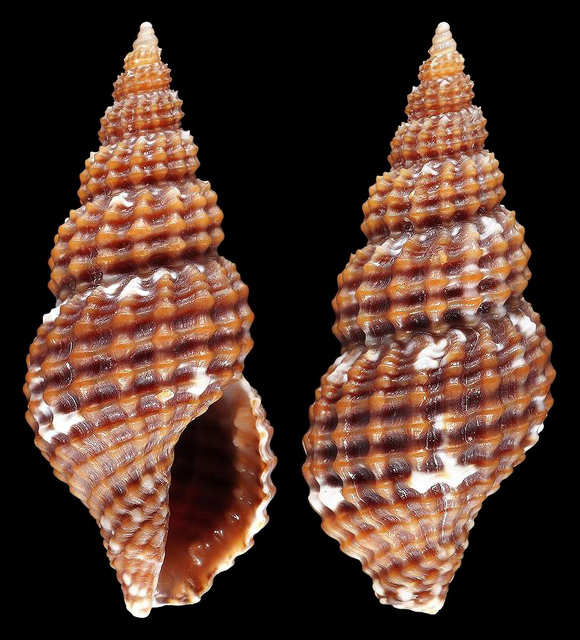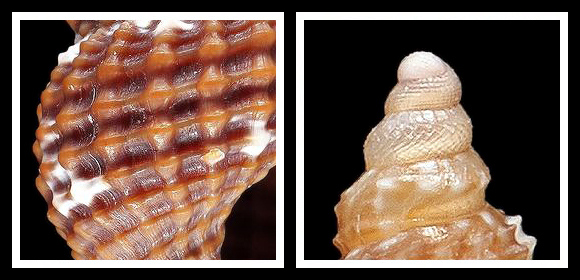Pusateri & Giannuzzi-Savelli, 2017

Predator in the low infralittoral-circalittoral.
« Shell fusiform, acute, of medium size for the genus […]. Protoconch multispiral of 2.7 convex whorls, […] protoconch I of 0.7 whorl […], with orthogonally cancellate sculpture; protoconch II of 2 whorls, strongly keeled on the last 0.5 whorl, with a diagonally cancellate sculpture on the lower half of the spire. Protoconch-teleoconch boundary with sinusigera outer lip. Teleoconch of 7-8 convex whorls. Axial scuplture of 16-20 strong, orthocline or slightly opisthocline ribs and interspaces as wide as ribs. Spiral sculpture of 5-6 (6) cordlets above aperture, slighthly narrower than axial ribs. Cancellation squared in juveniles, rectangular in adults; intersections of axials and spirals forming small knobby nodules. Microgranules absent. Subsutural ramp narrow, occasionally with one very thin cordlet at its periphery. Sculpture scarcely visible in transparency throughout the internal shell wall. Columella simple, slightly sinuous anteriorly, gently angled in the upper third. Anterior siphonal canal wide and short, posterior appreciable only in mature specimens. Outer lip with 8-11 weak inner lyrate denticles. Colour uniformly brown-orange sometimes with white spots. Occasional comma-shaped white spots on the subsutural ramp. Siphonal fasciole with 6-8 slightly nodulose spiral cords. » – Pusateri & al.: “A revision of the Mediterranean Raphitomidae 4”, Bollettino Malacologico vol. 53(2), Milano 2017, p.176.
Above and below:
30m deep, Molat island, Zadar archipelago, Croatia. 8,1mm. Original pictures provided by R. Stanić (HR).
– (CC BY-NC-SA) –

Left: the number of ribs and spirals is low enough to make the sculpture more marked than in many other species, but the nodules are not very prominent. Microsculpture made up of numerous growth marks. Right: the typical sculpture of the protoconch. Finally, the brown-orange colour may be specific.